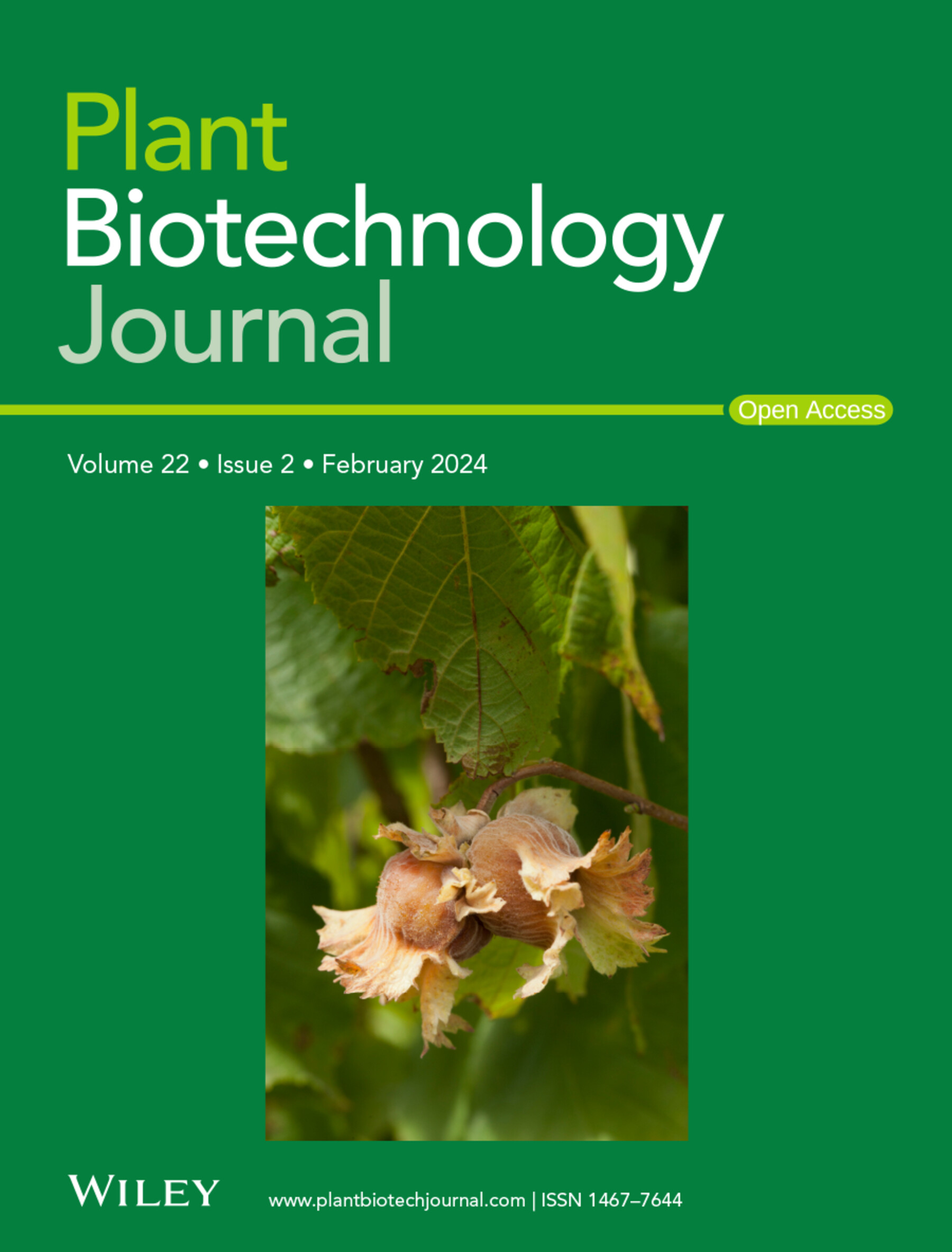The clarification of two hydroxylation steps in the conversion of cholesterol to OSW‐1 in Ornithogalum saundersiae
IF 10.1
1区 生物学
Q1 BIOTECHNOLOGY & APPLIED MICROBIOLOGY
引用次数: 0
Abstract
SummaryOSW‐1 is a cholestane saponin uniquely produced in阐明了山雀花中胆固醇转化为OSW - 1的两个羟基化步骤
w‐1是一种独特的胆甾烷皂苷,产自山雀科,具有潜在的抗肿瘤活性。然而,在O. saundersiae中负责OSW‐1生物合成的酶仍不清楚。通过稳定同位素标记方法,胆固醇被证实是OSW - 1的前体。接下来,两个细胞色素P450, OsCYP90B94和OsCYP90G11,以及它们的伴侣细胞色素P450还原酶OsCPR2通过比较转录组分析被挖掘出来,并被证明参与OSW‐1的生物合成。具体来说,OsCYP90B94将胆固醇催化为22R -羟基胆固醇,然后通过两个连续的氧化反应,第二个P450 OsCYP90G11将其转化为16β -羟基- 22 -氧-胆固醇,这是OSW - 1的前体。与它们的同系物不同,OsCYP90G11和OsCYP90B94表现出更广泛的催化乱交。OsCYP90B94可以识别胆固醇和7β -羟胆固醇,而OsCYP90G11可以与胆固醇、22R -羟胆固醇和16β,22R -二羟胆固醇发生反应,这表明除了OSW - 1生物合成外,它们还参与了不止一种途径。本研究为OSW‐1生物合成的完整表征奠定了基础。
本文章由计算机程序翻译,如有差异,请以英文原文为准。
求助全文
约1分钟内获得全文
求助全文
来源期刊

Plant Biotechnology Journal
生物-生物工程与应用微生物
CiteScore
20.50
自引率
2.90%
发文量
201
审稿时长
1 months
期刊介绍:
Plant Biotechnology Journal aspires to publish original research and insightful reviews of high impact, authored by prominent researchers in applied plant science. The journal places a special emphasis on molecular plant sciences and their practical applications through plant biotechnology. Our goal is to establish a platform for showcasing significant advances in the field, encompassing curiosity-driven studies with potential applications, strategic research in plant biotechnology, scientific analysis of crucial issues for the beneficial utilization of plant sciences, and assessments of the performance of plant biotechnology products in practical applications.
 求助内容:
求助内容: 应助结果提醒方式:
应助结果提醒方式:


